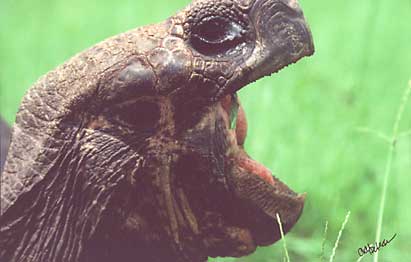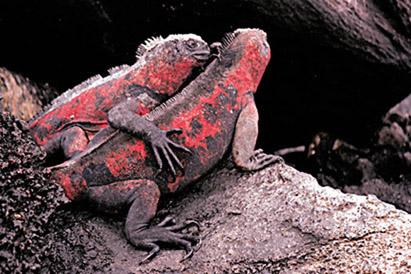The long life of giant turtles
2004/07/25 Rementeria Argote, Nagore - Elhuyar Zientziaren Komunikazioa

In Galapagos there are 15 subspecies of giant turtles ( Geochelone nigra).
If you want to see these giant turtles in their home residence, you have to make a long trip: Galapagos Islands. In the Pacific, about 1,000 kilometers from Ecuador, the Galapagos archipelago consists of 18 islands.
Many of the animals and plants that inhabit these islands are endemic, such as the marine iguana, the cormorant that does not fly and, of course, the turtle. No wonder, therefore, that Charles Darwin was fascinated by what he found there. It was in 1835 on the Darwin Galapago Islands and discovered species and subspecies never seen, and he wrote the theory of evolution studying their relationships.
Upon returning to England, Darwin carried three turtles on the Beagle boat. They were not mature turtles, since they usually exceed one hundred kilos, according to Darwin himself, “as a dish”. It seems that one of these three turtles still lives, is in an Australian zoo, which experts have calculated is 174 years old.
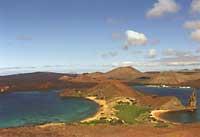
Eleven incidents
Harriet, so called that turtle, has had a long and random life: After several years in England, he was transferred to Australia, where he has lived in more than one park, museum and zoo.
However, the displacements made by Harriet are quite common in these turtles, since they live more than a thousand specimens outside the Galapagos Islands, parks, zoos, etc. At the same time, in the islands themselves there are fewer and fewer giant turtles and there are endangered subspecies.
It may be thought that in recent years the situation has worsened, but the most notable decrease in turtle population is the XVI. It began in the 20th century. The islands were discovered in 1535, and since then many ships approached to supply food and water. And turtles were a great source of meat for sailors.
The goats and the rest of the pets brought by the man to the islands also did not benefit from the turtles. Dogs and cats, for example, eat turtle eggs and kill younger specimens. In addition, turtles in general have to compete with herbivorous animals to feed themselves.
George 'solitaire'
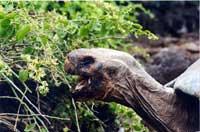
The turtles have been cleared and only remained in their subspecies. George 'solitary' is a male turtle belonging to the subspecies of the island of Pinta and currently no other turtle of this island is known. George's situation has generated doubts and ethical debates. There are experts who believe that it is necessary to reproduce at all costs and others who wait to find a female of the same subspecies.
And there is poor George, in the midst of the debate, tired and sad. Their caregivers are worried, of course, but what really worries them is that George has no interest in sex. And this is not common for a male turtle, since when they feel like sex they are not usually very demanding to choose a partner; if it is a circular stone of a certain size or a dead turtle, they are thrown in the same way.
In order to ignite George's libido, he was brought two slender turtles, but neither! George ignores females. For this reason, for some years they have been looking for a female turtle on the island of Pinta and are dedicated to conducting DNA studies of the turtles of Galapagos, spread all over the world, thinking that in some zoo or park there may be some subspecies of George.
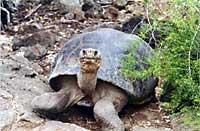
In fact, it is believed that a female of the same subspecies can become more easily excited. And if George managed to cover and reproduce the female, the subspecies of Pinta would not disappear. Researchers dream of restoring the original ecosystem of the island of Pinta, so it is necessary to create a colony of turtles of its subspecies. And the only option for this is to reproduce with a George Pinta turtle.
However, George's caregivers are in no hurry. He is still young, he is only a hundred years old, so there is still time to decide whether it is necessary to violate reproduction. If so, you should opt for the most genetically similar female turtle and use artificial breeding methods if necessary.
George's case is extreme, but in many subspecies of other islands only a few specimens remain. This is the state of the turtles in Galapagos. There are many turtles that have lived throughout their long life and have suffered thousands of accidents and displacements since the man arrived in these islands. Currently, residents of the Galapagos Islands themselves are protected and try to move turtles transferred to other territories to their place of origin.
Published in 7K.

Gai honi buruzko eduki gehiago
Elhuyarrek garatutako teknologia



